
What is apoplast movement in plants?
(April 2023) The apoplast is the extracellular space outside of plant cell membranes, especially the fluid-filled cell walls of adjacent cells where water and dissolved material can flow and diffuse freely. Fluid and material flows occurring in any extracellular space are called apoplastic flow or apoplastic transport.

Water Transport in Plants Exchange and Transport Ep 15 Zoë Huggett Tutorials
The Apoplast pathway is the path in which the water is moving between the intercellular spaces. The Apoplast includes the non-living spaces between cells and the cell membrane. Both pathways are involved in the movement of water across the root. Water flows via the Apoplast in the cortex.
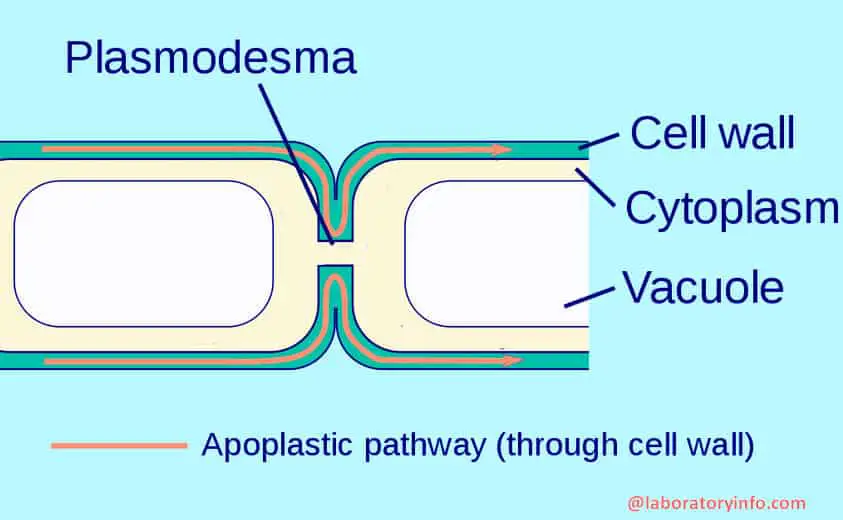
Difference between Symplast and Apoplast Pathways
34.21: The Apoplast and Symplast Plant growth depends on its ability to take up water and dissolved minerals from the soil. The root system of every plant is equipped with the necessary tissues to facilitate the entry of water and solutes.
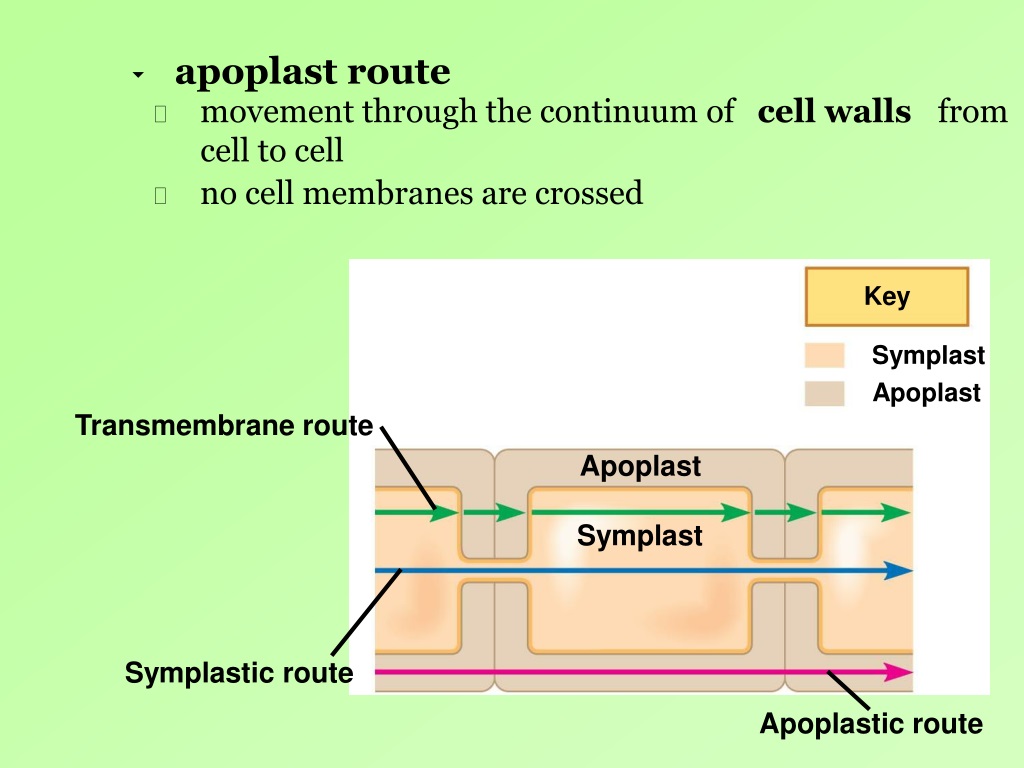
PPT Chapter 36 Transport in Vascular Plants PowerPoint Presentation ID9638517
The water and minerals have to cross different cell layers to reach the xylem. Apoplast and symplast pathways are the transport pathways adopted by water molecules. Although both are transport pathways, they differ from one another in various aspects. In the apoplast pathway, water moves through the cell walls and intercellular spaces without.

Apoplastic and Symplastic Pathway....Drawing YouTube
Symplast and apoplast D. A. Baker Chapter 86 Accesses Abstract There are two possible pathways for solute movement through plant tissues, the cell wall pathway and the cytoplasmic pathway. Movement may take place extracellularly through channels in the cell walls, thus bypassing the protoplasts and obviating the need to cross membrane barriers.

Mechanism of water transport by apoplastic and symplastic... Download Scientific Diagram
Apoplast and symplast are the two routes by which the water travels from root hair cells to the xylem of the root. In the apoplastic route, water moves through the cell walls and the intracellular spaces of the root cortex. In symplastic route, water moves through the protoplasts of the root cortex.

NCERT BIOLOGY CHAPTER 11 Imbibition, Symplast and Apoplast YouTube
Apoplast and symplast are two distinct pathways in plants that enable the transfer of water and ions from the root hair, through the root cortex, to the xylem elements. These routes can either exist together or separately, and they can have different rates of operation.
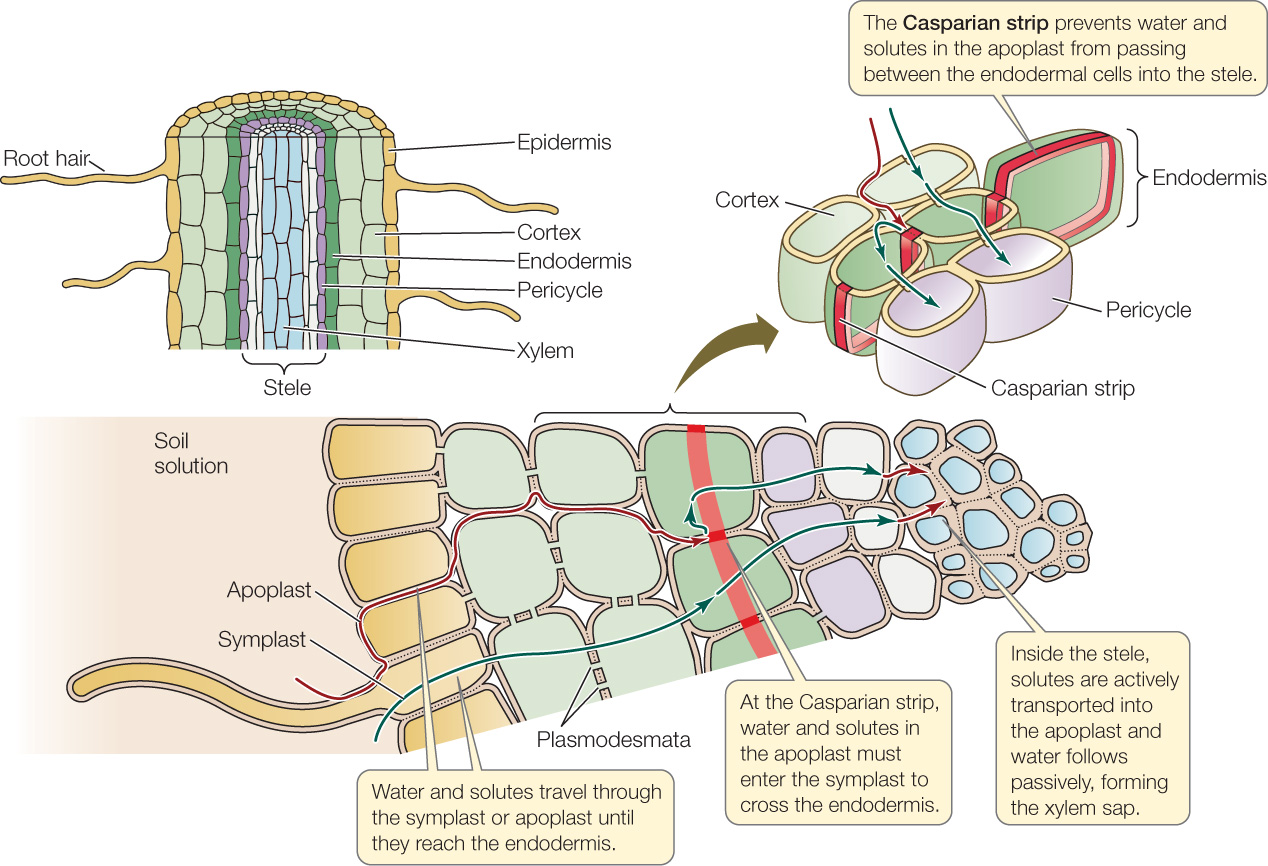
Figure 25.11
Nowadays, the apoplast is defined as the intercellular space filled with gas and water, contained between cell membranes, the interfibrillar and intermicellar space of the cell walls, and the xylem extending to the rhizoplane and cuticle of the outer plant surface ( Figure 1 ).
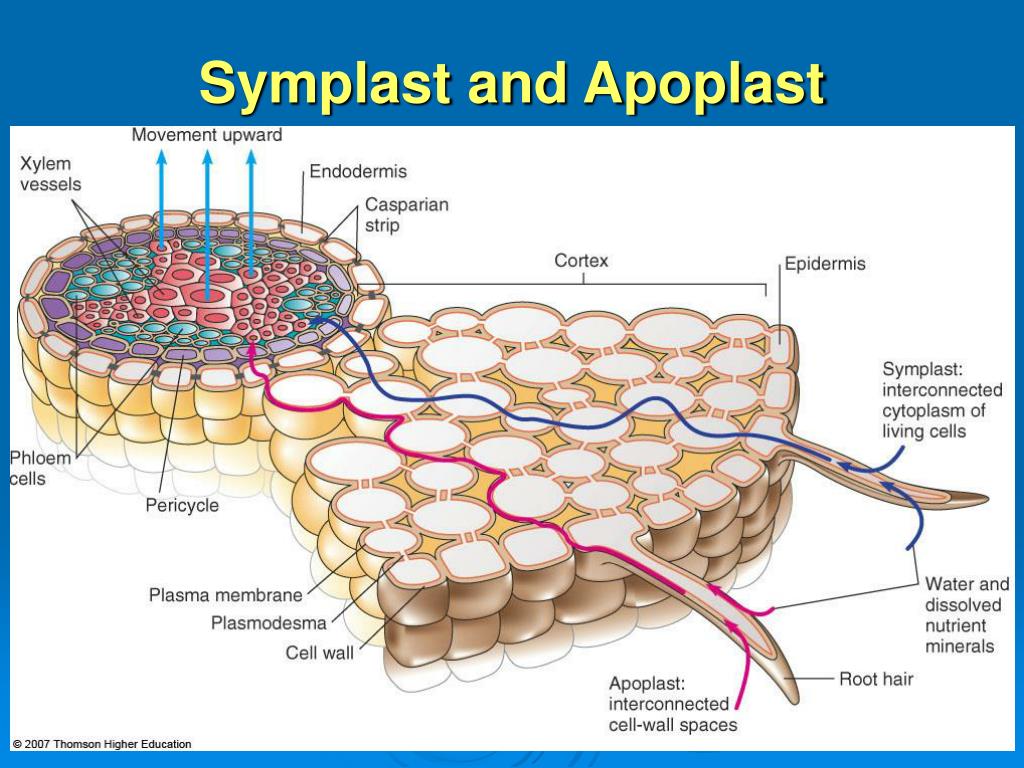
PPT Plant Organs Roots PowerPoint Presentation, free download ID366376
The apoplast pathway involves movement of substances outside of the cell membrane, while the symplast pathway involves movement of substances through the cytoplasm of interconnected cells. Although they differ in structure and function, the apoplast and symplast pathways work together to support the growth and development of plants.

Apoplast and symplast. Helpful to NEET, CSIR and University students. YouTube
The apoplastic pathway: It provides the movement of water through the cell wall and other intercellular spaces. The apoplast, which is also called a cell wall is present on the outer side of the cell. The symplastic pathway: It provides the movement of water from one cell to another cell by plasmodesmata.

Apoplast and symplast pathway YouTube
Apoplast and symplast are two separate pathways in plants that initiate the passage of water along with ions from root hair via root cortex to xylem elements. These routes may exist either simultaneously or separately having different rates. Let us have a detailed look at apoplast and symplast and the difference between the two.
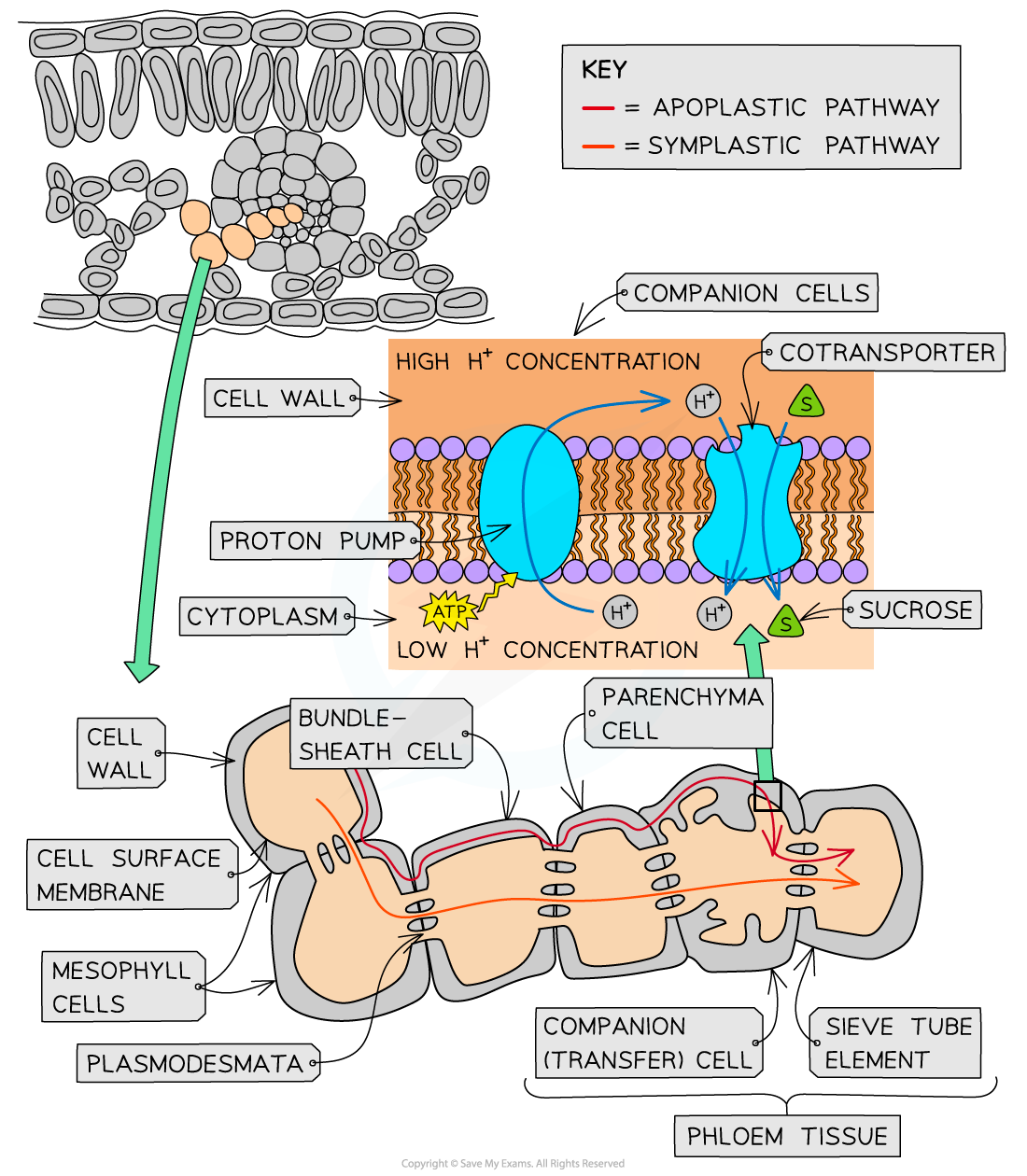
CIE A Level Biology复习笔记7.2.6 The Sucrose Loading Mechanism翰林国际教育
Symplast (also known as symplastic) Apoplast pathway Most water travels via the apoplast pathway (when transpiration rates are high), which is the series of spaces running through the cellulose cell walls, dead cells, and the hollow tubes of the xylem The water moves by diffusion (as it is not crossing a partially permeable membrane)
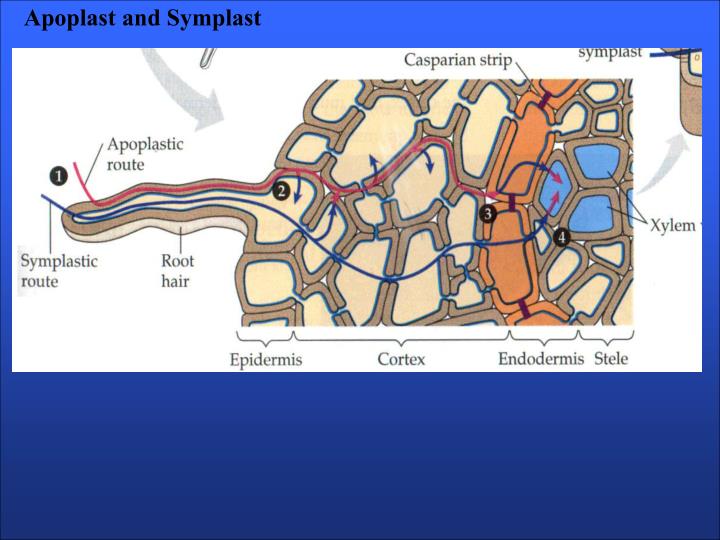
PPT Ch. 35(structure) Ch. 36(function) Roots and stems absorption and transport PowerPoint
To distinguish the living symplast from the dead apoplast, Munch invented the term "apoplast" in 1930. Inside the plant, the apoplast is the outer space of the plasma membrane, which allows the material to freely diffuse and is interrupted by the Casparian strip in roots. Apoplast Pathway
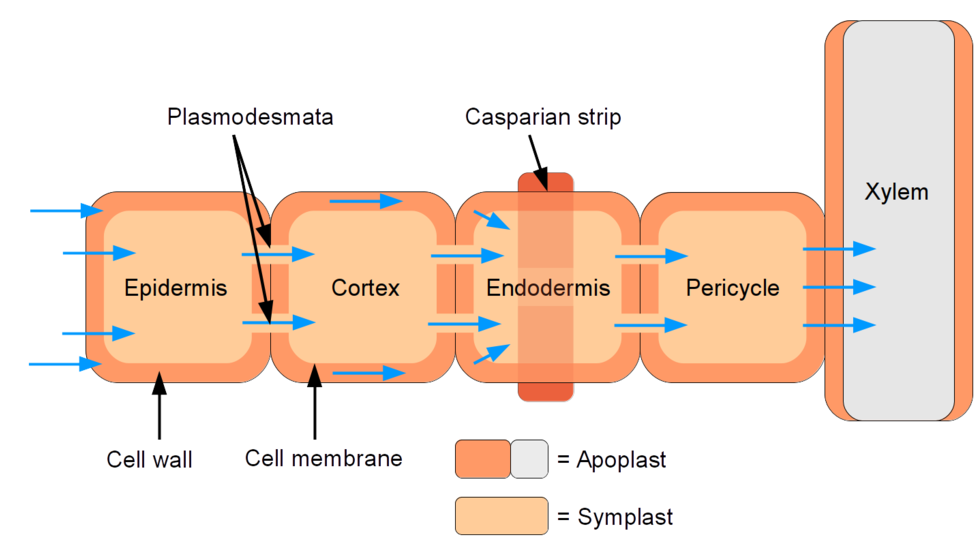
Difference Between Apoplast and Symplast Definition, Process, Characteristics
The apoplast route is the fully permeable route in which the water movement occurs in passive diffusion. Whereas the symplast is a selectively permeable route in which the water movement occurs by osmosis. The endodermis prevents the water and any solutes dissolved in water from passing through this layer via the apoplast pathway.
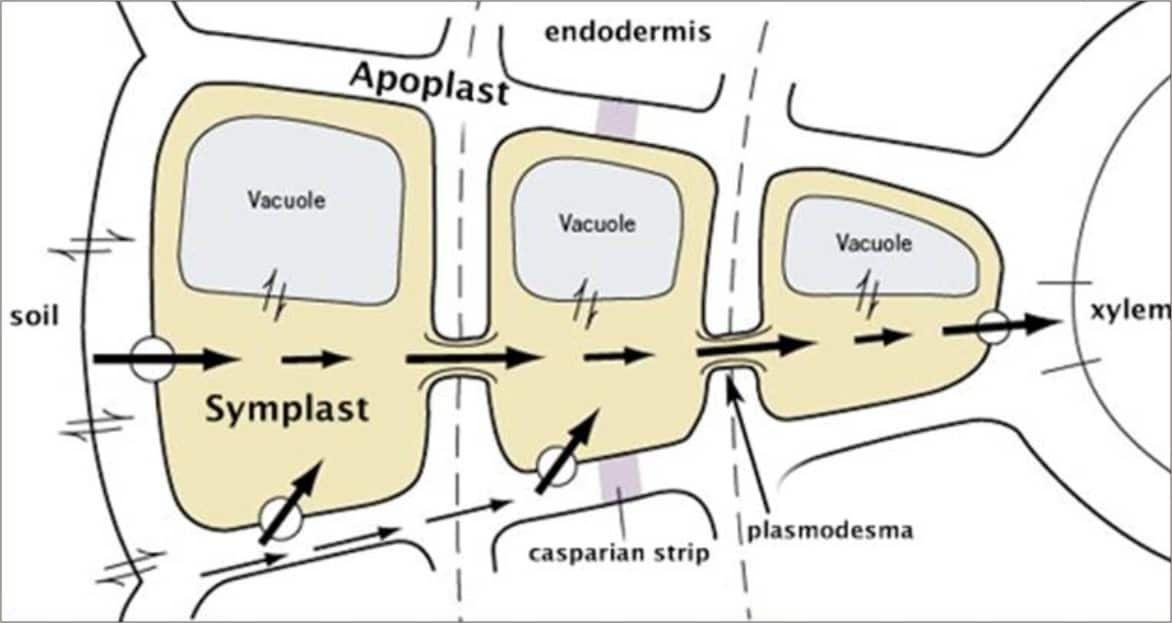
Apoplast Difference between Apoplast and Symplast
Pathways of Water Movement. Water can move through the roots by three separate pathways: apoplast, symplast, and transmembrane (transcellular). In the apoplast pathway (apoplastic route), water moves through the spaces between the cells and in the cells walls themselves.In the symplast pathway (symplastic route), water passes from cytoplasm to cytoplasm through plasmodesmata (Figure.
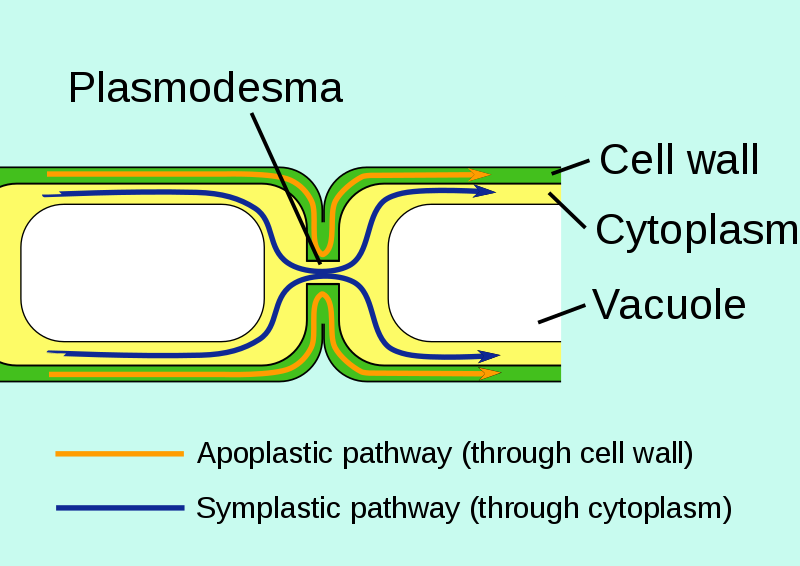
Top 10 Difference Between Apoplast And Symplast Pathways » BIOLOGY TEACH
Apoplast and symplast are the conduits of water and solutes throughout a plant's root system. Solutes are minerals (ions, amino acids) that are dissolved in water. Solutes can also include sugar.